You are in a comfortable seated position, with your eyes gently closed and your hands resting softly in your lap. You inhale deeply and slowly; then, as you exhale slowly, all your worries and anxieties melt away. You roll your head from one shoulder to the other and back. Any tension within your neck and shoulders gradually disappears. You feel more grounded and connected to those around you by the minute. You are appreciative of yourself and your body for taking time out. This is how a typical yoga class with national stoma charity Colostomy UK begins and how you could feel during one.
And, during National Yoga Month, there’s no better time to roll out your mat.
Equipment you may need
• Yoga mat (for mat yoga)
• Chair (for chair yoga)
• Loose comfortable clothing
• Water
• Cushion
• Blanket
• Support garment/belt for your stoma and abdominal muscles
• Yoga block(s)
• Yoga strap
Reaping rewards
So, you’ve had stoma surgery, and the first thought that might spring to mind about trying yoga is probably: ‘I can’t do that.’ Sound familiar? Well, while your posture, strength and flexibility are all likely to have been impacted due to surgery, bed rest and recovery, research shows that yoga can actually be beneficial for all of this.1
A 2016 case study confirms this; an ostomate who returned to practicing yoga 12 weeks after surgery found that the discipline had aided both their physical and psychological recovery.2
According to qualified yoga instructor and founder of Finding Space Yoga Lisa Middleton, who has delivered yoga classes for Colostomy UK since January 2020, yoga provides countless physical health benefits, whether you’re an ostomate or not. To name a few, you can expect increased body awareness, improved balance, better sleep, greater energy, reduced blood pressure and stronger bones, as well as improved digestion and breathing, she says.
‘Relaxation and reduction in pain and discomfort are huge benefits for ostomates and people who have just had surgery,’ she adds.
Having an operation can also be a traumatic experience that can leave your body feeling tense, says Lisa, so yoga can really help to relieve this and aid the healing process.
What’s more, yoga also provides a myriad of mental health benefits. Lisa explains that it creates a more harmonious relationship with your mind, brightens your mood, helps to reduce stress and anxiety, sharpens concentration to prevent feeling overwhelmed and aids resilience, which can be particularly powerful following an operation.
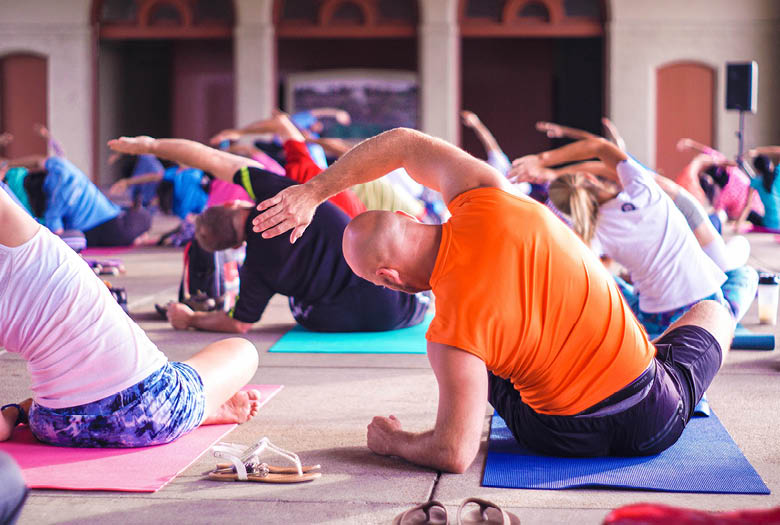
Relaxation and reduction in pain and discomfort are huge benefits for ostomates
Making moves
Lisa helped Colostomy UK deliver 56 chair yoga sessions to nearly 1200 UK participants in 2019. She claims chair yoga is very accessible and a particularly good entry point to yoga for people who are less mobile or have recently had surgery. In a typical class, Lisa will make sure participants have moved every part of the body. We will do standing work and use the chair for balance and for postures such as downward-facing dog, she explains.
‘You certainly don’t miss out by using a chair; it’s quite surprising what you can do.’
Finding your flow
Something Lisa regularly says to participants in her yoga sessions is: ‘Listen to your body.’ This is because she believes yoga is not a competition or about how it looks or what you can do, but more about how you feel and really listening to that. There’s no pressure to push yourself or do anything, adds Lisa.
She recalls: ‘One lady, who was probably a week out of surgery, came [to a yoga class] and said she just wanted to be there; she lay down for the relaxation, and that was her practice for the evening, but she got a lot out of it.
‘There’s so much more to yoga than just moving; there’s the meditation, the breathing and the connection with others.’
Three yoga poses that a class for ostomates may include
Lisa includes variations of these poses within her classes to ensure that they are suitable for all individuals. Speak to a health professional before attempting these exercises.
Seated cat-cow pose (upavistha bitilasana marjaryasana)
1. Begin seated on a chair with your spine long and both feet on the floor, and then place your hands on the tops of your thighs
2. Inhale, arch your spine, roll your shoulders down and back and gaze upwards – this is cow pose
3. Exhale, round your spine and tuck your chin into your chest – this is cat pose
4. Repeat this for five cycle
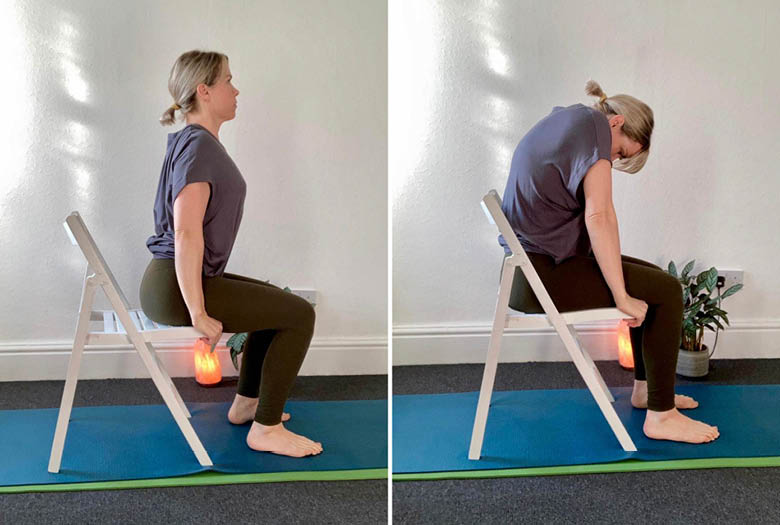
Seated warrior 1 pose (upavistha virabhadrasana 1)
1. Sit on a chair and turn to your right, so that you are sitting sideways, then move your right leg to the left-hand edge of the chair and extend your left leg behind you
2. Place your left foot on the floor, roughly parallel to the seat of the chair, and straighten your left leg while keeping your knee soft
3. With your torso facing over your right leg, inhale and raise your arms up towards the ceiling, then straighten your arms and bring your biceps by your ears
4. Hold for three breaths, then repeat on the other side
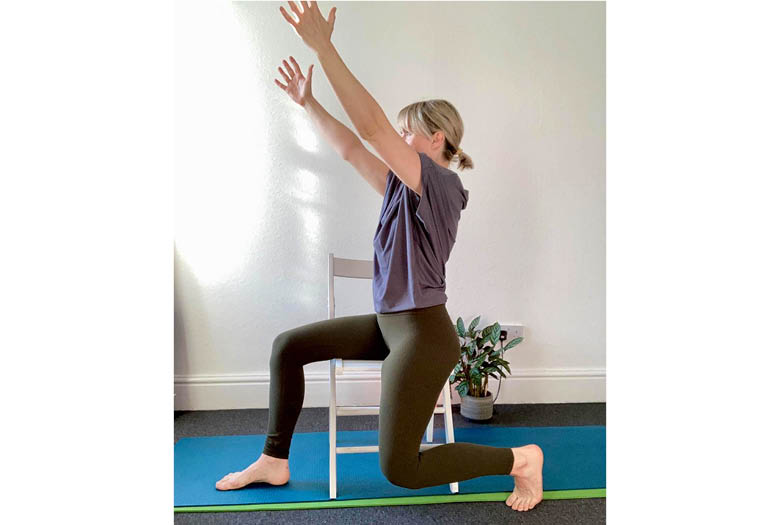
Constructive rest pose (savasana variation bent legs)
1. Lie in a semi-supine position (on your back, bend your knees to about 90 degrees and place your feet flat on the floor)
2. Let your arms rest on the floor by your sides
3. Breathe and relax, releasing any tension and bringing awareness to your min
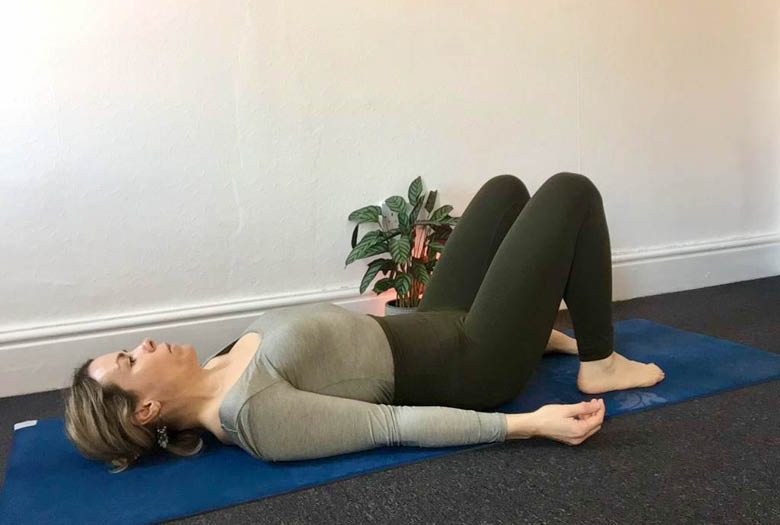
(Images Lisa Middleton/Finding Space Yoga)
Core concerns
You might be concerned about doing yoga poses that require you to lie on your stomach with a stoma, but Lisa offers some reassurance.
‘This depends on how you feel,’ she says, ‘some people are absolutely fine lying on their stomach, whereas some people, who are just post-surgery, may find their stomach is a bit tender and others may just need a couple of blankets on top of their yoga mat.
‘It’s a bit like [a pregnant lady doing yoga]. Some women lie on their stomach right until they’re really late in their pregnancy and others don’t. It’s all about how you feel as an individual.’
Ask yourself: ‘Am I in a pain-free zone?’. Never be in any discomfort and do what feels right for you, says Lisa. She also recommends speaking to your yoga instructor if you have any health concerns related to your practice.
Strengthened self-belief
A common myth about living with a stoma is that exercise will be more difficult or you will be unable to do it. However, not only is yoga with a stoma possible, but ultimately it can help you to believe in yourself and boost your confidence, which may be lacking following surgery.
Lisa encourages you to ‘come to a class with an open mind; the best way you can find out what [yoga] can do for you is to give it a try.’ In particular, she has noticed that yoga helps provide a sense of self-acceptance and can be empowering for ostomates by allowing them to see what they are actually capable of.
‘When you are more empowered, you are more resilient, and you feel more confident. Yoga really does change your mindset,’ claims Lisa. ‘I sometimes forget that participants have got a stoma because, with what I teach people, they can do it; their stoma doesn’t limit them.’
As yoga teacher and body positivity advocate Jessamyn Stanley says, ‘Yoga is for everybody and every body.’ Namaste.
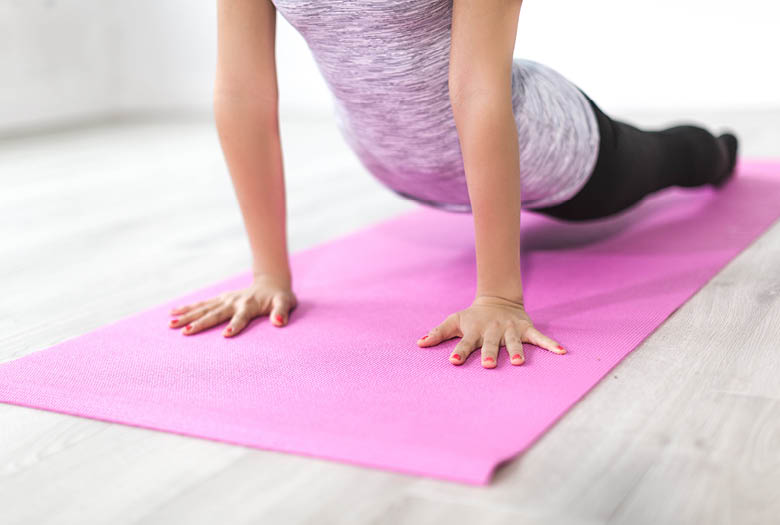
Yoga and chair yoga classes for people with a stoma are run by Colostomy UK
Further information
The yoga and chair yoga classes are part of Colostomy UK’s Active Ostomates project, which also runs swimming, archery, rugby league, mindfulness & meditation, zumba and dance sessions and aims to help people get active after stoma surgery. Virtual yoga and chair yoga classes will return in autumn, while face-to-face community sessions plan to return later in the year. Stay up to date with upcoming classes by visiting colostomyuk.org/active-ostomates/.
Sources
1. Colostomy UK. Sport and fitness after stoma surgery. 2021. https://tinyurl.com/yxb6huu5
2. Colman S, Timms K. Demonstrating the potential benefits of yoga and pilates to ostomates. Gastrointestinal Nursing. 2016; 14(3):22. https://doi.org/10.12968/gasn.2016.14.3.18
Gemma Harris is a freelance journalist, health writer and yoga convert who blogs at thegutchoice.com


